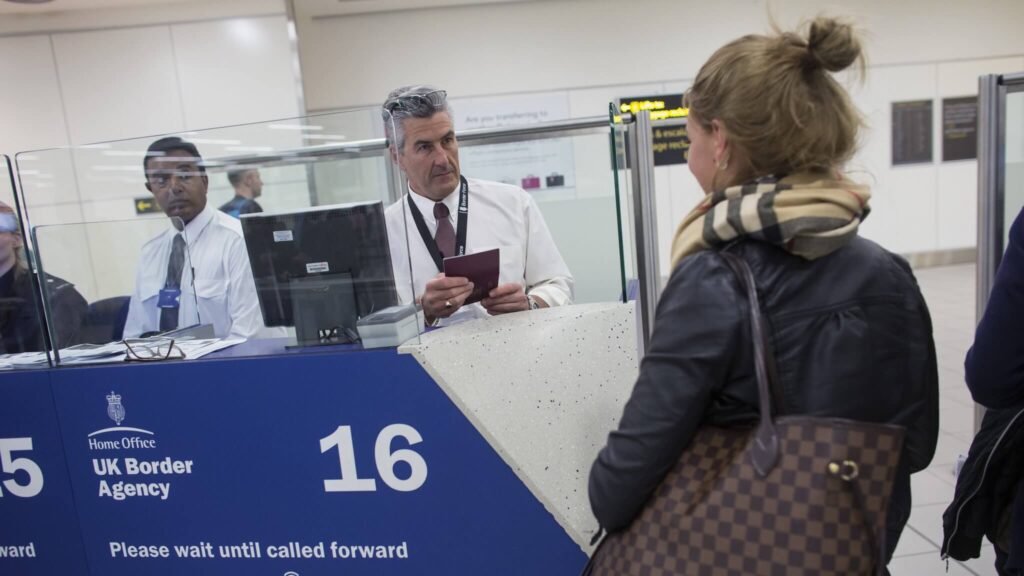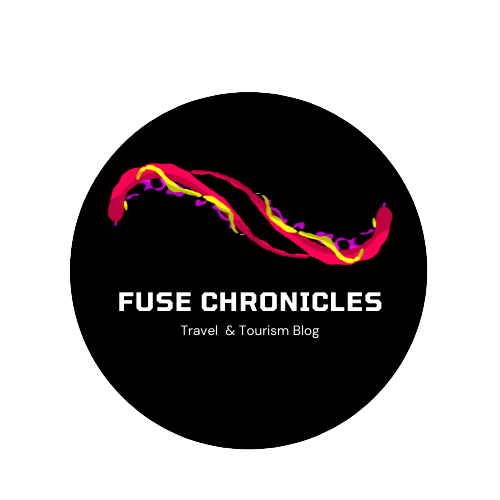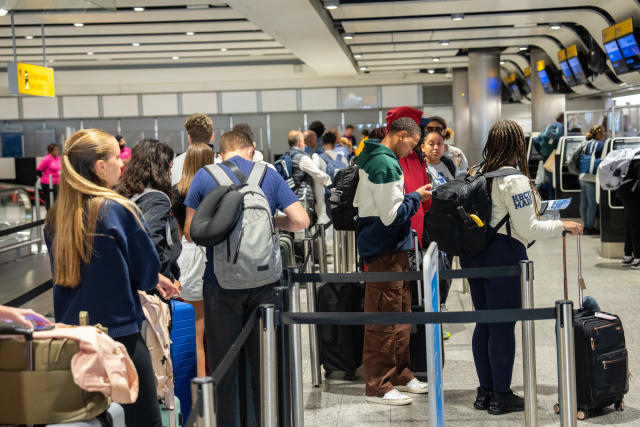In a proclamation of travel evolution, the European Union solidifies the timeline for the prerequisite of a cutting-edge travel pass, a mandatory precursor for those seeking entry into the European expanse from the United Kingdom. This seismic shift in travel protocols is poised to reshape the very fabric of cross-border mobility.
Related article: Ever dreamt of traveling for a living? Become a travel agent
Related article: Your ultimate guide on how to choose the best travel insurance in 2024
In a decisive move toward fortified border control, the EU delineates the imminent necessity for a state-of-the-art travel pass. This avant-garde measure will be a non-negotiable requirement for individuals aspiring to traverse the European frontier. As a result of this, 29 countries will be affected. Travelers are thus advised to brace themselves for a transformative chapter in the realm of international travel.
EU authorities thought this move was necessary to control immigration as well as a way of securing the region. Thus the impending necessity for a novel travel credential prior to gaining access to European territories. A revised timetable has been disseminated, outlining the anticipated commencement of the new regulations.
The ETIAS, Affected Countries And Exceptions
Enter the European Travel Information and Authorization System, succinctly known as ETIAS. This revolutionary system mandates prospective travelers to 29 European nations to initiate an online application for travel approval. The digital pass, intricately linked to one’s passport, boasts a validity spanning up to three years or until the expiration of the associated passport, whichever occurs first.
Destinations such as Spain, Greece, Italy, France, Germany, Netherlands, and Cyprus fall within the ambit of nations requiring citizens from the UK and numerous other global locales to procure an ETIAS prior to their sojourn. The nominal fee for this privilege stands at seven euros per individual – slightly exceeding £6 in the UK currency.

Payment is requisite through credit or debit card at the time of application, applicable solely to those aged between 18 and 70, with exemptions for those below 18 or surpassing 70. Other countries affected by this new travel guideline includes:
- Austria
- Belgium
- Bulgaria
- Croatia
- Czech Republic
- Denmark
- Estonia
- Finland
- Hungary
- Iceland
- Latvia
- Liechtenstein
- Lithuania
- Malta
- Norway
- Poland
- Portugal
- Romania
- Slovakia
- Slovenia
- Sweden
- Switzerland
EU Immigration Systems To Be Deployed
The Council of the EU elucidated, “The EU has instituted various information systems to bolster judicial, police, and border authorities.” These encompass Eurodac, a repository of digitized fingerprints for managing asylum applications, and the Schengen Information System (SIS), a collaborative information-sharing system for external border governance.
Other tools, including the Entry/Exit System, poised to replace manual passport stamping with electronic registration, and ETIAS, an online travel authorization system which will act as a travel pass, are currently in the deployment phase. The proposed IT architecture timeline projects the Entry/Exit System to be operational by Autumn 2024, followed by the operational readiness of ETIAS from mid-2025 onwards.

Despite multiple delays attributed to the prerequisite implementation of the Entry/Exit System, ETIAS is now earmarked for potential initiation in mid-2025, potentially extending into June of that year. An inside source informed Fuse chronicles that this innovation is not expected to be up and running before May 2025. Travelers intending to traverse borders during the 2025 summer season must secure the required permits before confirming travel plans.
While October 6, 2024 is tentatively seen as the commencement date for the Entry/Exit System, this remains unverified by the EU. This new automated check will eliminate the need for manual passport stamping at EU borders, recording crucial details such as name, travel document type, biometric data, and entry/exit specifics.
Implication For Travelers To Europe
As for ETIAS, a forewarning has been issued for applicants to procure authorization well in advance of border encounters. While most applications are anticipated to undergo rapid processing, some may incur extended processing times. Decisions are promised within four days, with possible extensions of up to 14 days for additional information or documentation, or up to 30 days for interview invitations. The EU recommends proactive ETIAS applications to mitigate travel disruptions. Certain criteria leading to ETIAS travel pass refusals must be considered, as denials entail travel restrictions.

In the realm of travel logistics, ETIAS emerges as a crucial prelude well before the border crossings, cautioning holidaymakers and business voyagers alike. While the majority of ETIAS applications are poised for swift processing within minutes, a contingency plan is advised for scenarios where decisions may extend beyond the standard timeframe.
The EU pledges to ensure swift processing of the plethora of applications they receive, but warns that there could still be some delays in the process. Thus, travelers are urged to initiate the process well ahead of their impending journeys. It’s imperative to grasp that an array of factors could lead to an ETIAS refusal, thereby imposing travel restrictions. Navigating this intricate landscape demands foresight, meticulous attention to detail, and adherence to the stipulated guidelines.
The Future Of European Travels
In essence, as the travel landscape evolves with the introduction of ETIAS, strategic planning becomes paramount for those venturing into European territories. The interconnected web of digital travel authorizations and information systems aims to streamline border management and enhance security measures. The impending paradigm shift, signifying the move from manual passport stamping to a seamless automated verification process, heralds a new era for cross-border mobility.

In the realm of 21st-century travel, adaptability is the key to unlocking a world of possibilities. The looming introduction of ETIAS travel pass signals a departure from the conventional, urging travelers to embrace a new era of border management. Beyond the logistical facets, the essence of travel lies in the stories etched along the way – narratives that transcend the confines of borders and resonate with the spirit of exploration.
As we navigate through the dynamic landscape of European travel, from the subtle dance of fingerprints in the Eurodac database to the synchronized rhythm of the Schengen Information System, each element plays a role in crafting a narrative of security and connectivity. The amalgamation of technology and regulation encapsulates not just a shift in protocols but a narrative of a safer, more interconnected global community.
In the labyrinth of global travel, foresight becomes the compass that guides us through uncharted territories. As the clock ticks toward the prospective implementation of ETIAS in mid-2025, our narrative unfolds with a commitment to unraveling the complexities that shape the traveler’s experience.

Beyond the bureaucratic contours, the impending synchronization of the Entry/Exit System and ETIAS travel pass is a symphony of innovation, orchestrating a seamless ballet of security measures. Picture a future where your journey across European borders is not just a traversal of landscapes but a harmonious convergence of cutting-edge technology and stringent protocols.
Conclusion
The evolving landscape of European travel is underscored by the anticipation surrounding impending introduction of the Entry/Exit System in Autumn 2024. This cutting-edge system, poised to automate border checks, signifies not just a logistical upgrade but a paradigm shift towards efficiency and security. The tentative date of October 6, 2024, for the system’s launch, while not yet confirmed by the EU, signals a tangible step toward a seamlessly connected European travel experience.
The synchronized synergy between the Entry/Exit System and ETIAS reflects a meticulous approach to fortifying the borders while streamlining traveler experiences. With the Entry/Exit System poised to don the operational mantle in Autumn 2024, a sense of anticipation reverberates through the corridors of travel enthusiasts.
The prospect of bidding adieu to manual passport stamping heralds a streamlined future, where each border crossing becomes an automated dialogue between databases, ensuring not just security but expeditious passage. In the midst of these transformative changes, the mid-2025 launch of ETIAS beckons.
Delayed but not diminished, this online travel authorization system stands as a testament to the intricacies of system integration. As the pieces fall into place, it’s not just about acquiring a visa; it’s about embracing a journey defined by preparation, awareness, and a thirst for discovery.
While uncertainty lingers in the air, one thing remains constant – embarking on a voyage transcends the mere act of moving from one point to another; it’s a tapestry woven with regulations, nuances, and the exhilaration of exploration. However, our commitment to equipping you with the knowledge needed to navigate this ever-shifting terrain.
As we delve deeper into the intricacies of ETIAS, from application to border-crossing innovations, our commitment to providing you with comprehensive insights remains unwavering. We invite you to join our community. Subscribe today for a front-row seat to the unfolding chapters of modern travel. Uncover the nuances, stay ahead of the curve, and make your travel endeavors not just seamless but truly extraordinary.












3 Responses